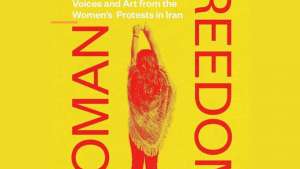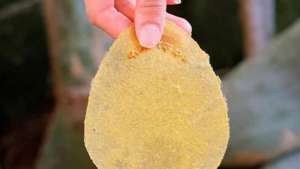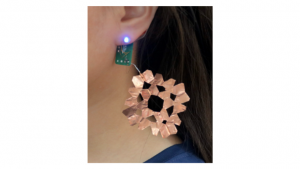While the immediacy of Coronavirus concerns have temporarily subsumed water’s place in the media, and possibly in some of our minds, too, the complex issue of H2O is never going to evaporate. Already, one-third of the world’s population resides in areas of severe water shortage.
Because it was World Ocean Month in June, and because COVID-19 pollution is starting to compromise the water cycle, we’ve had watery thoughts on the brain of late. Did you know that 75% of this computing organ is made up of that very same precious liquid that now holds our focus?
Here are a few ways in which the world’s most fluid minds are responding to issues of water preservation and sustainability:
AWAY WITH WASTE
One of the sad consequences of all the disposable protective gear used in the bid to combat COVID-19 is that a new kind of waste is being washed into an already taxed ocean. Consider the adverse impact of single-use masks, gloves and other PPE items on the seas, especially when we rely on them to offset more carbon than the rainforests. By not looking at more sustainable materials to replace all that rubber, plastic and polyester, we’re creating an ecological timebomb.
Image via Opération Mer Propre's Facebook page.
PORTABLE POTABLE
Desalination plants have been touted as an answer to drought, yet waiting for slow-moving bureaucratic systems to implement large-scale solutions at some future point isn’t effective for the individual already in need. With such plans being taken with a pinch of salt, enter QuenchSea, a low-cost, portable device that takes just an hour to purify a quantity of sea water for personal use.
CURRENT AFFAIRS
Imagine a self-sustaining coastal housing development where homes are sensitively perched above the water and powered by wave generators and solar cells. Architecture studio Dada did just that with its Currents for Currents project. The new-wave houses are shaped like boat sails. Read more.
SWIMMING CHICKENS
The Dutch are famed for reclaiming land from the sea. But the port of Merwe-Vierhaven in Rotterdam has realised that it doesn’t need a system of dykes to hold back the tides, it can ride them instead. A non-landlocked home for 7 000 hens, designed to reduce emissions of nitrogen and poultry dust, is already underway. It will join a similar dairy farm. Both are part of a larger project of floating agriculture systems in the port.
The planned floating poultry farm is in its final design stage. Image supplied.
SLICK SILICA
At #DI2020 we revealed bio-bricks made from human urine. Now, Indian company Rhino Machines has built a sustainable brick made from recycled sand/foundry dust (80%) and mixed plastic waste (20%). The SPB (Silica Plastic Block) was developed by R+D Labs to solve for the environmental hazard created by dust waste and pollution – a massive problem in India. What’s more, the bricks use plastic as a bonding agent, completely eliminating the need for water during mixing and curing!
The SPB (Silica Plastic Block). Image supplied.
GOING UNDER
Overfishing, pollution and oxygen depletion have acidified our seas, threatening our marine ecosystem. Thankfully, restorative ocean farmers GreenWave have developed a model of sustainable underwater vertical farming that will help reduce this danger while producing edibles like scallops, clams, oysters and kelp. These crops can provide animal feed, fertiliser and biofuel, too.
Seaweed grown in vertical sea farms can capture carbon, improve the sea's oxygen levels and provide nutritious food. Image supplied.
ROOF OVER OUR HEADS
South African coatings company Plascon has launched a revolutionary roof paint that is entirely free of harmful APEO chemical compounds. APEO compounds are persistent and bio-accumulative when released into the environment and toxic to human and wildlife, especially marine life. All other conventional roof paints contain APEO compounds that, over time, are washed into the environment and eventually contaminate the soil, water tables, rivers and ultimately, our oceans. For this reason, many European Union and other countries have banned the use of APEOs.
OUT OF THIN AIR
All of India and the northern half of China currently suffer permanent water shortages, while cities across the globe experience sporadic drought. Yet a new sponge-like nanomaterial, designed to be used in existing dehumidifiers, could offer a new source of aqua. If the material is used in a large commercial building’s HVAC system, it could produce thousands of litres of water per hour – out of thin air!
Image of drought by Anton Ivanchenko.
WHAT GROCERIES REALLY COST
Louis Bindernagel has invented a scale that weighs your groceries to tell you what they really cost - in water. The amount of water used for food production is always underestimated, so understanding the true cost of, for instance, eating an out-of-season cherry, will hopefully influence consumer behavior towards more sustainable shopping habits.
'SEA' THE LIGHT
South Africans are all too familiar with electricity blackouts and load shedding. If only we had a series of TidAl generators along our coastline! This hydroelectric turbine is designed to provide relief during power outages as it generates electricity from the motion of the ocean. One turbine can supply power to 10 people.
TidAl by Roberto-Apolinar Martinez and Gilbert Fortin.
STRESSED OUT
"Water Stress" is the term used to describe increasing annual water shortages due to burgeoning demand and changes to the natural water cycle. See how data visualizer Andrew Levinson has mapped these issues and how they affect the so-called oil of the 21st century.












